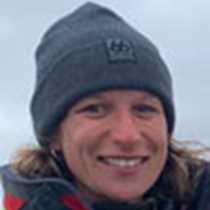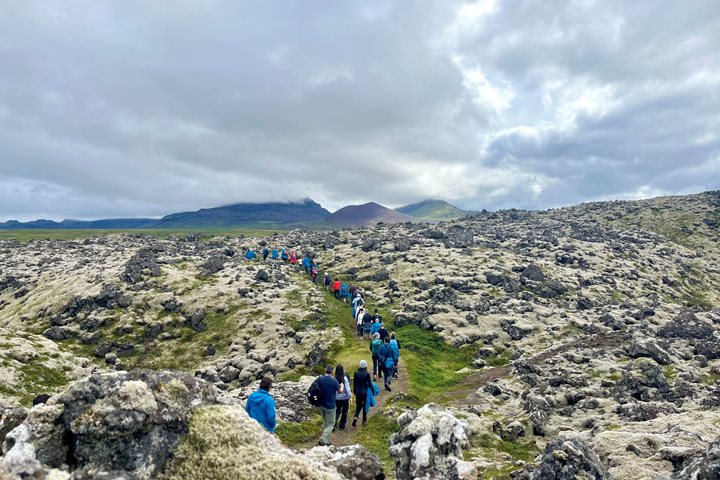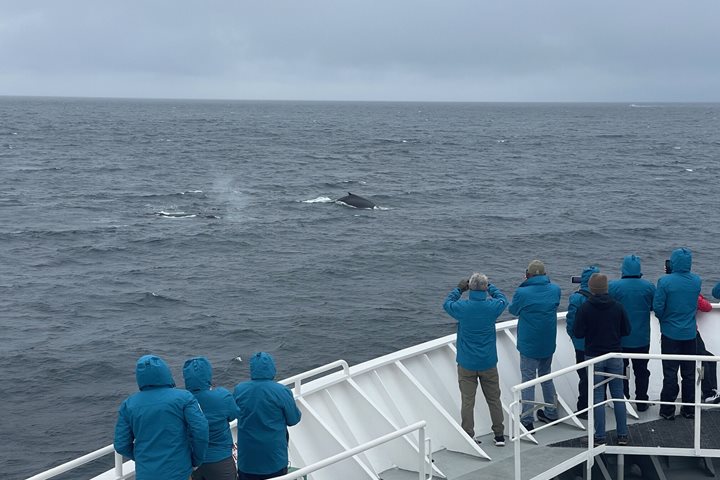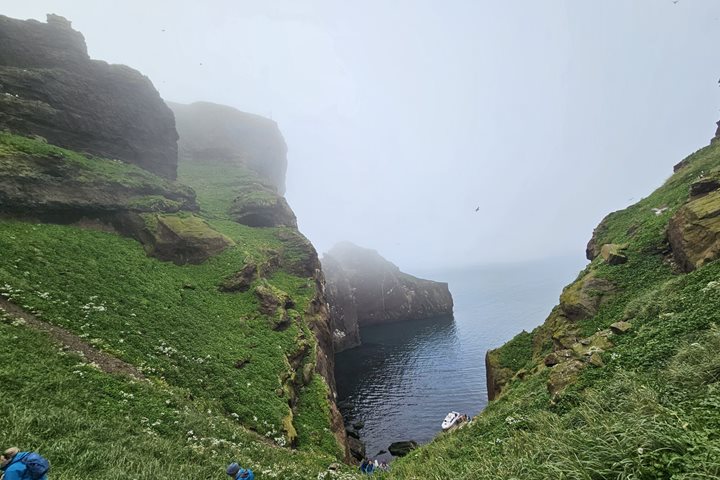Our second day in the Westfjords of Iceland started in the fog. It had a mysterious atmosphere, giving us a disorienting feeling of being at the edge of the world.
We spent the morning in the second largest fjord of the Westjords, Arnarfjörður. This ten-kilometer fjord splits into two branches, and we were headed to the southern bay of the northern branch. Our plan for the morning was to see the Dynjandi Waterfall. This waterfall is undoubtedly one of the most beautiful in Iceland. Its name means ‘resounding’ because of how loud it is. It is said that the last people living in this area left in the 1950s because the constant noise was driving them to insanity. The waterfall is also sometimes called the ‘Bridal Veil Fall,’ and legend tells of a lady giant who was abandoned by her lover before their wedding. The sound of the waterfall is said to be the wailing of the heartbroken bride-to-be, and the waterfall her fallen veil.
Our passengers had different options to get to the waterfall. Guests who needed a leg stretch started at the split of the fjord and walked all the way to the bottom of the fjord where Dynjandi is located. Others were dropped off on the beach by the waterfall. Everyone was then free to enjoy the waterfall from below or to hike up 200 meters for a closer view. Since the clouds were very low, we were worried about not getting a proper view over the waterfall. But luckily, the clouds rose around Dynjandi as we arrived, and we could see the whole 100 meters of the fall.
While in the fjord, we encountered a few grey seals and harbour seals, whooper swans, eider ducks, and arctic terns. As we sailed on towards the mouth of Arnarfjörður, we spotted a solitary humpback whale close to a salmon farm. We moved side by side until the whale decided to part ways. This sailing time was also the perfect opportunity to admire the geology of the area. The fjord was formed by a massive trunk glacier during the Ice Age and filled with seawater afterwards. Tributary glaciers carved U-shaped valleys on each side of the fjord. In the afternoon, National Geographic photographer Karen Kasmauski gave us a delightful presentation called Emotional Landscapes.
As we sailed around the once again foggy Westfjords on our way south, we got lucky one more time. Our next stop, the cliff Látrabjarg, was fortunately fog-free. Látrabjarg has a few superlatives to be proud of. It is the westernmost point of Iceland, the largest cliff in Europe (10 km long), and host of the largest colony of razorbills in the world. Látrabjarg means the loud cliff because thousands of seabirds nest there in the summer, including puffins, common guillemots, razorbills, black-legged kittiwakes, and northern fulmars. We sailed along, and as we left, seabirds continued to follow us for some time.
Sunshine and beautifully blue oceans set the tone for the rest of the afternoon. Geologist Grace Winer gave a fascinating presentation on the geology of Iceland and the eruptions of Eyjafjallajökull and Eldfell in Heimaey, delighting us with her passion for Iceland and her amazing sense of humour.







